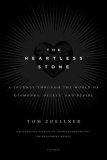Summary | Excerpt | Reviews | Beyond the Book | Readalikes | Genres & Themes | Author Bio

Critics' Opinion:
Readers' Opinion:
First Published:
May 2006, 288 pages
Paperback:
Jun 2007, 304 pages
 Book Reviewed by:
Book Reviewed by:
BookBrowse Review Team
Buy This Book
This, of course, has been a feature of the diamond trade for
centuries. There is simply no better way to move around a large sum of money in
a small place—almost no mineral is worth more per gram. This is the signature
fact of a diamond, and its curse. It is why violence and deception trail it like
mist. There are lots of places on the body to tuck one away. Jean-Baptiste
Tavernier, one of the first European diamond merchant kings, visited India in
1665 and reported of the miners: "And their wages are so small they do not
manifest any scruple, when searching in the sand, about concealing a stone for
themselves when they can, and being naked, save for a small cloth which covers
their private parts, they adroitly conceive to swallow it."
How does the smuggling happen in the Central African Republic
today? I wanted to know.
The finance director took the berry-sized diamond from my hand,
held it upward, and fixed me with a stare that I was unable to read.
"Take this and put it in your ass," he said. "You can walk out
of this country with a half-million dollars in your ass. Six stones, that’s
about the size of a small piece of shit. Sell it to a gangster. Watch TV, man.
That’s what’s happening in reality. . . . You will always find people willing to
do something for you the moment you offer the right price."
Seeing a legitimate diamond is a lot harder than seeing a dirty
one in the Central African Republic. I went down to the Ministry of Mines, which
was in a motel-shaped building wrapped around a dusty courtyard. I asked one of
the senior deputies, a genial English-speaking man named Cyriaque Gonda, if I
could take a look at a diamond-producing region that week.
Certainly that could be arranged, he told me. There are two
large mining districts, both along broad river valleys and both about a day’s
drive from Bangui. But there was a small problem. It was illegal for foreigners
to enter these areas. I would need a permit and a letter of permission from the
minister and those things would cost me $200, payable in U.S. dollars.
"But I don’t want to buy any diamonds," I said. "I don’t want to
dig for any diamonds. I just want to see where they come from."
"Yes, certainly," said Cyriaque. But $200 American is what it
would cost. In cash.
"I don’t think I’m going to pay," I said, wondering if this was
a legitimate fee.
"Sorry," said Cyriaque. "That is the rule."
What was the big secret? I wondered. This was a mineral that
underwrote a huge part of the economy. Diamonds were responsible for up to 60
percent of the nation’s export income, and slightly more than half of them were
clean. Wouldn’t they want to show them off? I had already spent $130 of my
dwindling cash at the Ministry of Communications for a press permit, signed by
the minister, Parfait M’baye. He was supposed to have been one of the actors in
the March 2003 coup that brought the new government to power. M’baye now
occupied a dingy two-story office with a stone wall out front and an empty
flagpole tipping to the side. Each ministry here is its own province, and every
request from the outside is an opportunity to create more paperwork and collect
more fees. The French have left their legacy in Central Africa and part of it is
the worship of government process, no matter how shaky the government or
pointless the process.
I left the ministry, annoyed, and started walking along Avenue
Boganda, past roadside ditches filled with trash and old grayish water, thick
enough to be like gelatin. Street vendors sold cell phone covers, plastic dolls,
and cooked goat meat from plywood shelves balanced on tires. The air was hazy
with harmitaan, the mixture of veld smoke and desert sand blown down from the
Sahara that particulates the sky every winter. There was a wooden arch at the
entrance to the main traffic roundabout, a remnant of the Bokassa era. I walked
under it and up the gentle hill to the high gates of the 1960s-era Presidential
Palace, where a right turn would take me back to the hotel where I was staying.
Copyright © 2006 by Tom Zoellner





The House on Biscayne Bay
by Chanel Cleeton
As death stalks a gothic mansion in Miami, the lives of two women intertwine as the past and present collide.

The Flower Sisters
by Michelle Collins Anderson
From the new Fannie Flagg of the Ozarks, a richly-woven story of family, forgiveness, and reinvention.

The Funeral Cryer by Wenyan Lu
Debut novelist Wenyan Lu brings us this witty yet profound story about one woman's midlife reawakening in contemporary rural China.
Your guide toexceptional books
BookBrowse seeks out and recommends the best in contemporary fiction and nonfiction—books that not only engage and entertain but also deepen our understanding of ourselves and the world around us.